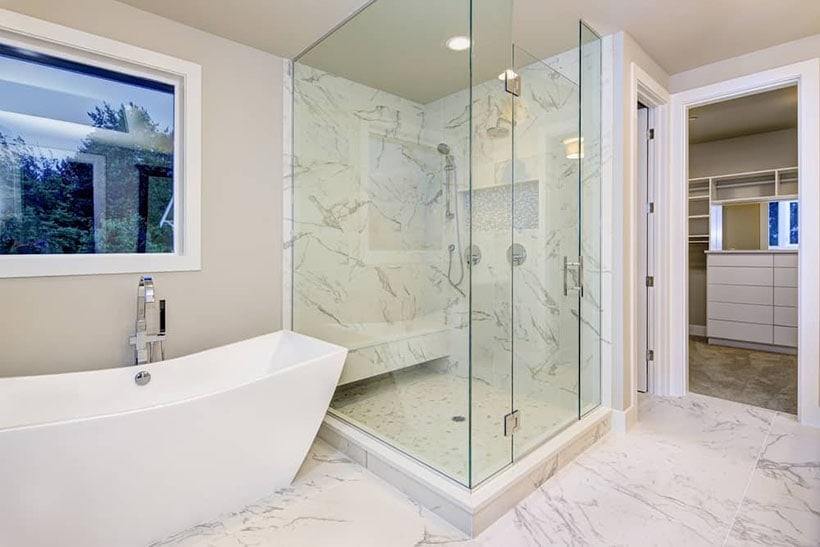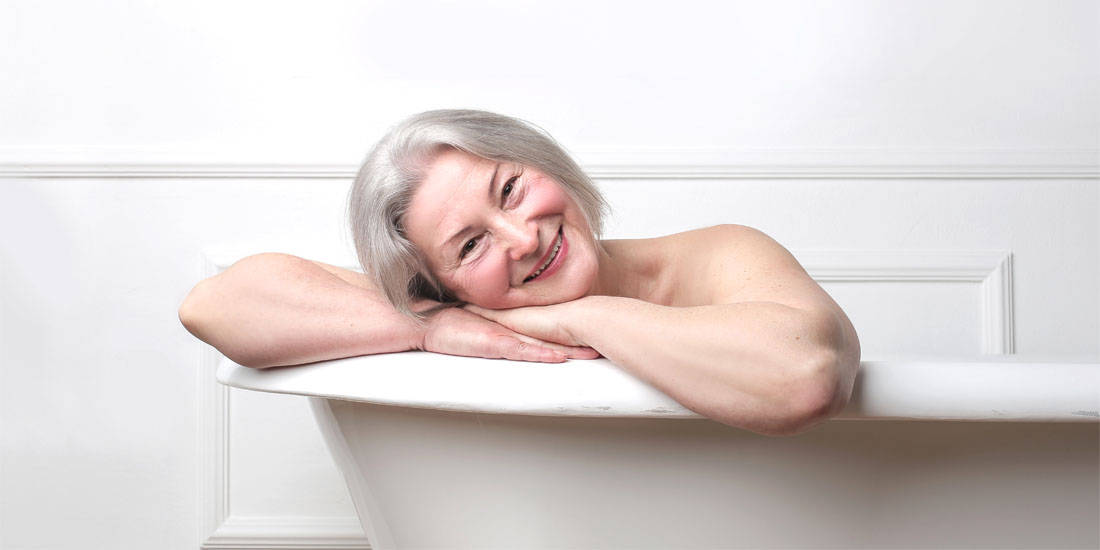Making the Right Choice for Bathing Safety and Comfort for the Elderly
When you ponder the warmth of bath time or the invigoration of a shower, the immediate thoughts might not gravitate toward safety concerns, especially for older adults. As age progresses, the routine that once felt second nature, like slipping into clean clothes, can present unexpected challenges.
Slippery Surfaces in the bathroom, like the tub floor, augmented by high tub sides and the strain of standing for too long, each carry their set of risks. The risk of injury amplifies, particularly with the risk of slips on unguarded surfaces or accidents due to a false sense of stability.
So here lies the dilemma – Which is more suitable for an elderly individual – a bath or a shower? The bath water might seem inviting, but does it outweigh the convenience of a quick shower? While evaluating the best options for yourself or an elderly loved one, comparing the comforts and potential pitfalls is paramount.
Safety in the bathroom, a place often prone to accidents, shouldn’t curtail the tranquillity one gets during an aromatherapy bath or the freshness after a shower. By looking into the specifics of baths and showers, you can make informed choices and create a bathroom layout that promotes functionality and safety.
Bath versus Shower – Advantages & Disadvantages

Both baths and showers have their advantages and potential risks for elderly individuals. The choice between them often depends on an individual’s needs, physical abilities, and preferences. And if the bath is preferred, getting the right bath shapes or types is also an important safety consideration. Let’s break down the safety considerations for both options here:
Baths

Advantages:
- Relaxing and Therapeutic: A warm bath can help soothe aching muscles and provide therapeutic benefits.
- Consistent Depth: Once in the bath, the individual is at a stable and consistent depth, which provides better stability.
Risks:
- Difficulty Getting In and Out: Entering and exiting a bathtub can be challenging without a bath rail or bath grips due to the high sides. This act poses a great risk for slips and falls.
- Slippery Surface: The bath base can become dangerously slippery without a textured surface or bath mat.
- Longer Exposure to Water: If an individual struggles to exit the bathtub, they could end up staying in the water for an extended period, increasing the risk of hypothermia.
Showers

Advantages:
- Easier Access: Walk-in showers, especially those without a step or a very low threshold, are easier to access than traditional bathtubs.
- Adaptability: Showers can be equipped with various safety features such as grab bars, non-slip mats, bath safety strips, and shower seats or benches.
- Quick Process: Showers typically require less time, making them beneficial for those with limited stamina. Due to age, certain health conditions, or fatigue, such individuals might find it easier to manage the brief shower duration than a prolonged soak in a bathtub. The expedited nature of a shower helps conserve energy, preventing undue fatigue or discomfort.
Risks:
- Standing for Extended Periods: If the elderly person doesn’t have a shower chair or seat, they might need to stand for an extended time, which can be tiring or even dangerous.
- Water Splash: Water can splash outside the shower area, making the surrounding floor slippery.
- Smaller Space: Some shower cubicles can be restrictive, making it hard to move around, especially if a carer’s assistance is needed.
Scalding Risk
Given the abovementioned considerations, there’s a risk of scalding with baths and showers. If the water temperature isn’t adjusted or water heaters aren’t used correctly, there’s a risk of burns. Installing Anti-Scald Devices or similar temperature control measures can help eliminate this risk.
Highly Recommend These Anti-Scald Shower Mixers to Prevent Scalding Incidents
Breathing Difficulty
In a steam-filled bathroom, the air can become saturated, potentially causing difficulty in breathing for senior individuals. The steam displaces oxygen, and in the confined space of a shower or bath, this can exacerbate respiratory challenges. To mitigate this risk:
- Ensure good ventilation by keeping a window or door slightly open.
- Install an effective exhaust fan to reduce steam buildup.
- Take shorter showers or baths to lessen steam production.
Safety or Convenience: Which is More Important?

Safety and convenience are often seen as two ends of the spectrum, especially when discussing elderly care or individuals with mobility challenges. However, they aren’t mutually exclusive; when properly implemented, safety measures can enhance convenience, especially in settings like a bathroom.
Regardless of your preference, it’s fortunate that a range of accessories and fixtures can make the bathing or showering experience both safe and convenient:
- Bath Mats and Bath Safety Strips or Non-Slip Bath Stickers: These anti-slip surfaces can be placed on the tub floor to counteract slippery surfaces. Made of textured rubber, they provide added traction. They are available in various bath mat sizes to fit different bath shapes.
- Grab Bars and Bath Grab Rails: Installing these inside the shower or next to the tub provides essential support, especially for those with balance issues or a loss of balance. They offer a steady grip during baths or when the bathroom floor gets wet.
- Handheld Showerheads: A flexible handheld showerhead can be adjusted to various heights or brought close to any part of the body, offering greater control and reducing the need to move around, especially in the shower.
- Benches, Seats, and Shower Chairs: For those who may have difficulty sitting in the tub, a bath seat can provide a comfortable and safe alternative to lying down completely. Similarly, shower stools and benches can reduce fall risk and provide comfort for those who have difficulty standing for extended periods.
- Temperature Control or Anti-Scald Valves: These fixtures regulate water temperature, ensuring it doesn’t become dangerously hot and pose a risk of burns.
- Good Lighting: Bathing or showering activities can be dangerous for older people or individuals with low vision without adequate lighting. Especially when using the bathroom at night. Bright LED lights counteract this hazard, illuminating potential bathroom hazards.
- Clear Paths: Ensure that the bath or shower entry and exit paths are clear of obstacles. This includes any rugs or mats outside the shower, which should be secured to the floor to prevent skids and trips.
- Walk-in Tubs with Clamps to Bath Sides: These specially designed bathtubs come with a door and bath grips that make entering and exiting the tub easier, especially for disabled people. Their design eliminates the need to navigate high tub sides, and they fill and drain quickly, making them safe and convenient.
- Bath Lifts: Absolutely, bath lifts are an excellent option among bath aids. They are motorized bath chairs that gently lower and raise the individual in and out of the bath, ensuring they can enjoy a therapeutic aromatherapy bath without any risk of injury. It offers independence to those struggling with traditional tubs, bridging the gap between safety and convenience.
This list is by no means exhaustive; there is no lack of bath safety products available, whether bespoke or ready-made. You can also design the bathroom in such a way that it is safe and convenient for the elderly or the person with mobility issues at home.
In the end, while the risk of accidents like bath drownings or accidents at bath time exists, with the right bathroom safety products, these risks can be substantially mitigated without compromising convenience.
Selecting the Right Bath

If the bath is preferred over the shower, which bath type is most suitable for the elderly and individuals with a physical disability? And which bath type should be avoided?
When selecting a bath for elderly or disabled individuals, safety, accessibility, and comfort are paramount.
And the bath should be positioned against the wall. This arrangement reduces the open space around the tub, lowering the risk of falls, and ensures easy access. This setup offers better structural support and maximizes bathroom space, aiding movement and care assistance.
Here’s a breakdown of bath types in terms of their suitability for these groups:
Most Suitable Bath Types for the Elderly and Disabled:
- Walk-in Tubs: These tubs are specially designed for those with mobility issues. They have a door that allows the user to step in without climbing over a high edge. Once inside, the door is sealed, and the tub can be filled with water. They often come with built-in seats, handrails, and non-slip flooring.
- Shallow Baths: These are lower in height, allowing for easier access. They can be paired with bath seats or lifters to help the individual get in and out.
- Baths with Integrated Grab Rails provide added support and security when entering, exiting, or moving within the tub.
Bath Types to Avoid for the Elderly and Disabled:
- Deep or Freestanding Tubs: These tubs often require a significant step over the edge to enter or exit, which can be challenging and risky for individuals with mobility issues. Additionally, they may not offer any built-in support features. And the risk of falls is doubled with the open spaces around a freestanding bath.
- Jacuzzi or Whirlpool Tubs: While the jets can offer therapeutic benefits, they can also be tricky for those with mobility issues due to their often larger and deeper design. Additionally, the force of the jets can be disorienting or uncomfortable for some elderly individuals.
- Slipper Baths: These have one or two raised ends, which might look elegant but can be difficult to access and pose quite a trip hazard.
When choosing a bath for an elderly or disabled individual, it’s also essential to consider other bathroom elements like the layout, flooring and aids such as a grab bar or non-slip mat. Always involve the user in decision-making, ensuring the bath meets their needs and preferences.
Summary – 10 Bath Safety Expert Advice For Seniors
Bath safety is paramount, especially as we age. The familiar comforts of our bathroom can transform into a potential hazard zone due to reduced mobility, balance, and strength. However, with proactive adjustments, seniors can maintain independence while ensuring safety. Here’s how:
- Non-Slip Mats: Always place these in and around the bath to prevent slips on slippery surfaces.
- Grab Bars: Install a sturdy grab bar inside the bathtub and nearby for support.
- Bath Seats: A waterproof seat can make showers more comfortable for those unable to stand for long.
- Walk-in Tubs: These are designed for seniors, providing easy access without climbing over high tub sides.
- Temperature Checks: Always adjust to the right bathing temperature before getting in to prevent or reduce the risk of scalds.
- Good Lighting: A well-lit bathroom can significantly reduce the risk of accidents.
- Keep Essentials Within Reach: Store frequently-used items (like soap or shampoo) within easy reach to prevent overstretching.
- Regular Cleaning: Cleanliness prevents mold and slippery soap scum buildup.
- Emergency Protocols: Ensure there’s a method to call for help in emergencies, like a waterproof phone or alert system.
- Routine Check: Regularly check and repair any bathroom fixtures to ensure they are always in good working condition.
Remember, safety in the bathroom can be both a proactive and responsive process. Creating a safe and comfortable environment for seniors is feasible with the right steps and equipment.

